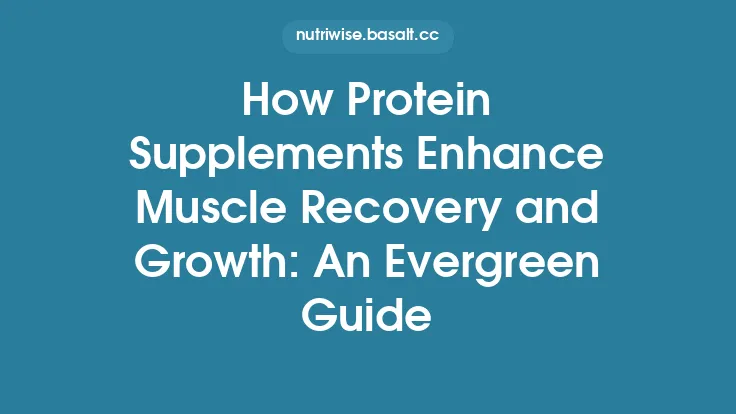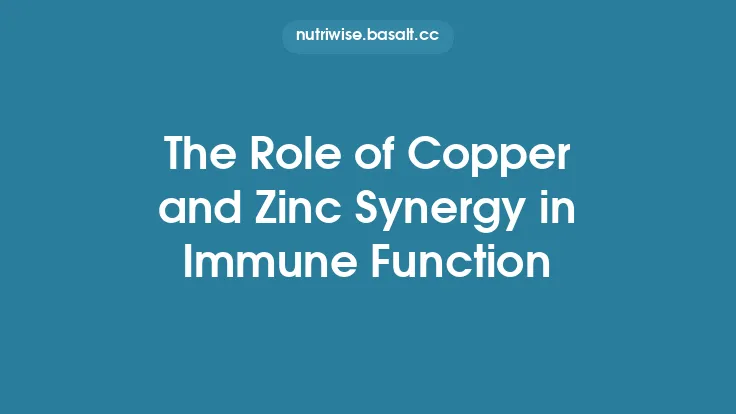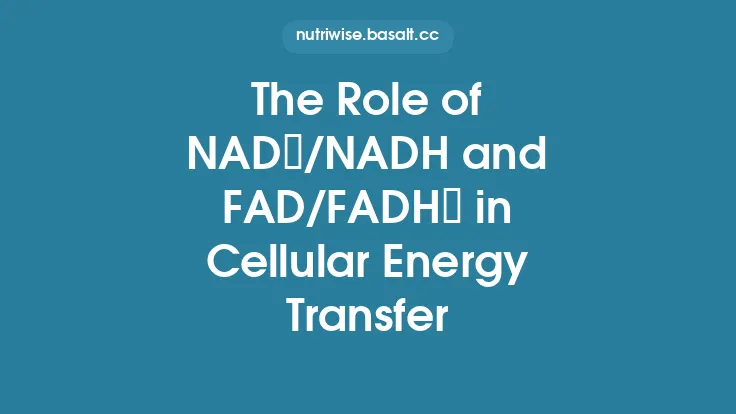Muscle tissue is constantly being turned over, even in the absence of overt exercise. Throughout the day, a subtle balance exists between the breakdown of existing contractile proteins and the synthesis of new ones. When we engage in resistance training, high‑intensity interval work, or any activity that imposes mechanical stress on the fibers, this balance is temporarily tipped toward breakdown. The body then initiates a coordinated repair response that, if supported by adequate protein availability, results in the restoration of damaged structures and, over time, an increase in muscle size and strength. Understanding how protein participates in this cascade is essential for anyone interested in the biology of muscle adaptation.
Muscle Damage and the Need for Repair
Mechanical loading creates microscopic lesions—often called micro‑tears—in the sarcomeres, the fundamental contractile units of muscle fibers. These lesions manifest as disruptions in the Z‑discs, partial detachment of actin‑myosin cross‑bridges, and perturbations of the surrounding extracellular matrix. The immediate consequence is an elevation in muscle protein breakdown (MPB), driven by proteolytic systems such as the ubiquitin‑proteasome pathway and autophagy‑lysosome mechanisms.
Simultaneously, the body activates a repair program that includes:
- Inflammatory signaling – Cytokines (e.g., IL‑6, TNF‑α) and chemokines recruit immune cells to the site of injury, clearing debris and releasing growth‑promoting factors.
- Activation of satellite cells – Quiescent muscle stem cells positioned between the basal lamina and sarcolemma become activated, proliferate, and differentiate.
- Up‑regulation of protein synthesis pathways – The translational machinery is primed to incorporate new amino acids into nascent contractile proteins.
The net outcome of these processes determines whether muscle mass is maintained, lost, or gained.
Molecular Pathways Governing Muscle Protein Synthesis
The central hub that integrates mechanical, hormonal, and nutritional cues is the mechanistic target of rapamycin complex 1 (mTORC1). When activated, mTORC1 phosphorylates downstream effectors such as p70S6 kinase (S6K1) and the eukaryotic initiation factor 4E‑binding protein (4E‑BP1). These events accelerate ribosomal biogenesis, increase the rate of mRNA translation, and ultimately boost muscle protein synthesis (MPS).
Key upstream regulators include:
- Mechanical stimuli – Stretch‑activated kinases (e.g., focal adhesion kinase) and phosphatidic acid generation convey the physical load to mTORC1.
- Growth factors – Insulin‑like growth factor‑1 (IGF‑1) and insulin signal through phosphoinositide 3‑kinase (PI3K)/Akt, which directly phosphorylates and inhibits the TSC1/2 complex, a negative regulator of mTORC1.
- Amino acid availability – Certain amino acids, particularly leucine, act as direct activators of mTORC1 via the Rag GTPase pathway, positioning mTORC1 at the lysosomal surface where it can be efficiently stimulated.
The convergence of these signals ensures that MPS is up‑regulated precisely when the muscle fiber is primed for repair.
Amino Acid Signaling and the Role of Essential Residues
While the mTORC1 pathway can be triggered by mechanical and hormonal inputs, the presence of free amino acids is a non‑negotiable requirement for sustained protein synthesis. Essential amino acids (EAAs) cannot be synthesized de novo and must be supplied exogenously. Their intracellular concentrations serve as a proxy for the cell’s nutritional status.
- Leucine – Functions as a potent allosteric activator of the Rag GTPases, facilitating mTORC1 translocation to the lysosome. Its role is often highlighted because it can independently stimulate MPS even in the absence of other EAAs, though maximal synthesis requires a full complement of EAAs.
- Isoleucine and Valine – Contribute to the activation of mTORC1 and also support the synthesis of branched‑chain keto‑acid metabolites that feed into the TCA cycle, providing energy for the energetically demanding process of protein assembly.
- Lysine, Methionine, and Threonine – Serve as substrates for post‑translational modifications (e.g., methylation, acetylation) that influence gene expression patterns during muscle remodeling.
The intracellular pool of these amino acids must be replenished continuously; otherwise, the translational apparatus stalls, and the repair process is compromised.
Satellite Cells and Myonuclear Accretion
Satellite cells are the primary source of new nuclei for growing muscle fibers. Upon activation, they undergo a tightly regulated program:
- Proliferation – Driven by MyoD and Myf5 transcription factors, satellite cells expand their numbers.
- Differentiation – Expression of myogenin and MyHC (myosin heavy chain) isoforms guides the formation of myoblasts.
- Fusion – Myoblasts fuse with existing myofibers, donating additional nuclei that increase the transcriptional capacity of the fiber (the myonuclear domain theory).
The addition of new myonuclei is essential for supporting the heightened protein synthesis required for hypertrophy. Without sufficient myonuclear accretion, the fiber’s ability to sustain elevated MPS is limited, leading to a plateau in growth.
Balancing Synthesis and Breakdown: Net Protein Balance
The concept of net protein balance (NPB) captures the dynamic equilibrium between MPS and MPB. During the acute post‑exercise window, MPS can be elevated for up to 48 hours, while MPB remains elevated for a shorter period. The net effect depends on:
- Amino acid availability – Sufficient EAAs shift the balance toward synthesis.
- Hormonal milieu – Anabolic hormones (insulin, IGF‑1, testosterone) suppress MPB and amplify MPS.
- Energy status – Adequate ATP levels are required for the energetically costly steps of translation and protein folding.
When NPB is positive over repeated training cycles, muscle hypertrophy ensues. Conversely, a chronic negative NPB leads to atrophy.
Factors Modulating the Repair Process
Several physiological and environmental variables influence how effectively protein supports muscle repair:
| Factor | Mechanistic Influence |
|---|---|
| Age | Diminished satellite cell pool, blunted mTORC‑C1 signaling, and reduced anabolic hormone levels impair NPB. |
| Training status | Trained individuals exhibit a more robust MPS response to the same mechanical stimulus, partly due to enhanced ribosomal capacity. |
| Inflammatory load | Excessive or prolonged inflammation can activate proteolytic pathways (e.g., NF‑κB) that increase MPB. |
| Oxidative stress | Reactive oxygen species can damage proteins and DNA, necessitating additional repair mechanisms that compete for amino acids. |
| Hormonal fluctuations | Acute spikes in cortisol can elevate MPB, while insulin surges promote amino acid uptake and MPS. |
Understanding these modulators helps explain inter‑individual variability in muscle adaptation.
Age‑Related Considerations and Sarcopenia
Sarcopenia—the age‑related loss of muscle mass and function—is characterized by a reduced capacity to mount a positive NPB. Key contributors include:
- Anabolic resistance – Older muscle fibers require higher intracellular EAA concentrations to achieve the same mTORC1 activation as younger fibers.
- Satellite cell senescence – The pool of functional satellite cells declines, limiting myonuclear addition.
- Hormonal decline – Lower circulating levels of testosterone, growth hormone, and IGF‑1 diminish the anabolic signaling cascade.
Targeted strategies that ensure a steady supply of high‑quality EAAs, combined with resistance training, can partially offset these deficits by re‑sensitizing the mTORC1 pathway and stimulating satellite cell activity.
Research Tools for Studying Muscle Protein Dynamics
Modern investigations of muscle repair rely on sophisticated methodologies:
- Stable isotope tracer techniques – Incorporation of ^13C‑ or ^15N‑labeled amino acids (e.g., phenylalanine) allows quantification of fractional synthetic rates (FSR) of muscle proteins in vivo.
- Muscle biopsies – Provide tissue for assessing signaling protein phosphorylation (e.g., p‑S6K1), satellite cell markers (Pax7), and gene expression profiles.
- Magnetic resonance spectroscopy (MRS) – Non‑invasive measurement of intramyocellular metabolites, offering insight into energetic status during repair.
- Proteomics and phosphoproteomics – High‑throughput identification of newly synthesized proteins and post‑translational modifications that accompany remodeling.
These tools have elucidated the temporal sequence of events from mechanical stress to protein accretion, reinforcing the centrality of protein in the repair continuum.
Practical Implications for Optimizing Muscle Repair
While the article deliberately avoids prescribing specific intake amounts or timing strategies, several evergreen principles emerge for anyone seeking to support muscle repair through protein:
- Ensure a continuous supply of essential amino acids – Maintaining an adequate intracellular pool prevents translational stalling during the prolonged post‑exercise repair window.
- Facilitate efficient amino acid transport – Adequate hydration and a balanced electrolyte environment support the activity of amino acid transporters (e.g., LAT1) that deliver EAAs to the cytosol.
- Promote a favorable hormonal environment – Strategies that naturally enhance insulin sensitivity (e.g., regular physical activity, adequate sleep) improve amino acid uptake and mTORC1 activation.
- Mitigate chronic inflammation – Incorporating anti‑inflammatory nutrients (e.g., omega‑3 fatty acids) can reduce excessive MPB without directly addressing protein quality or timing.
- Support satellite cell health – Adequate micronutrients such as vitamin D, zinc, and magnesium are essential cofactors for DNA synthesis and cell proliferation, indirectly bolstering the repair process.
By aligning nutritional status with the molecular demands of muscle repair, individuals can maximize the efficiency of the repair machinery, fostering stronger, larger, and more resilient muscle tissue over the long term.





